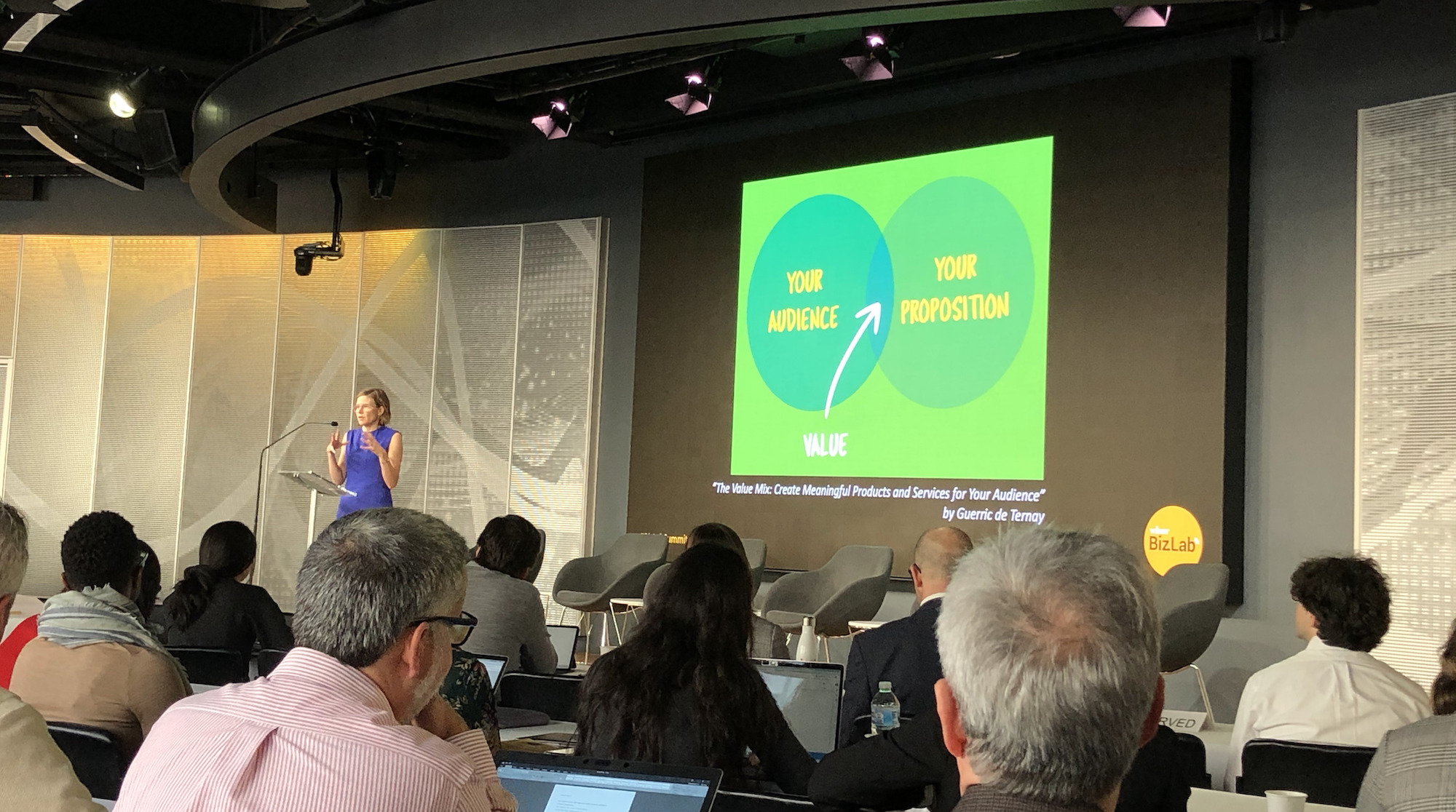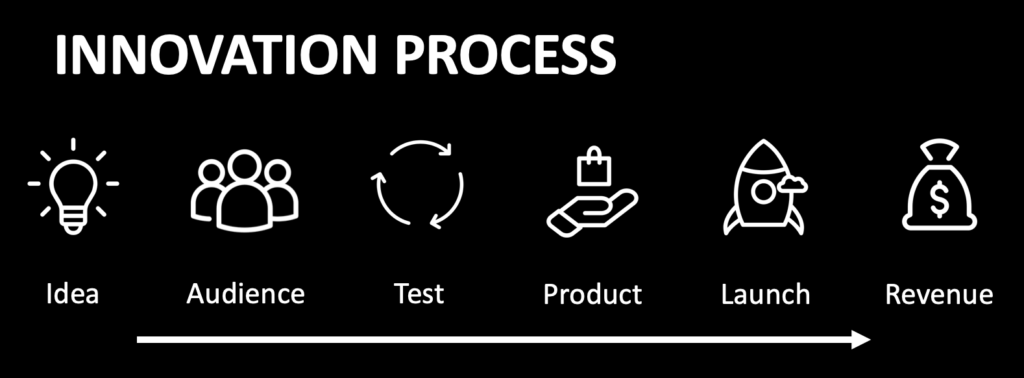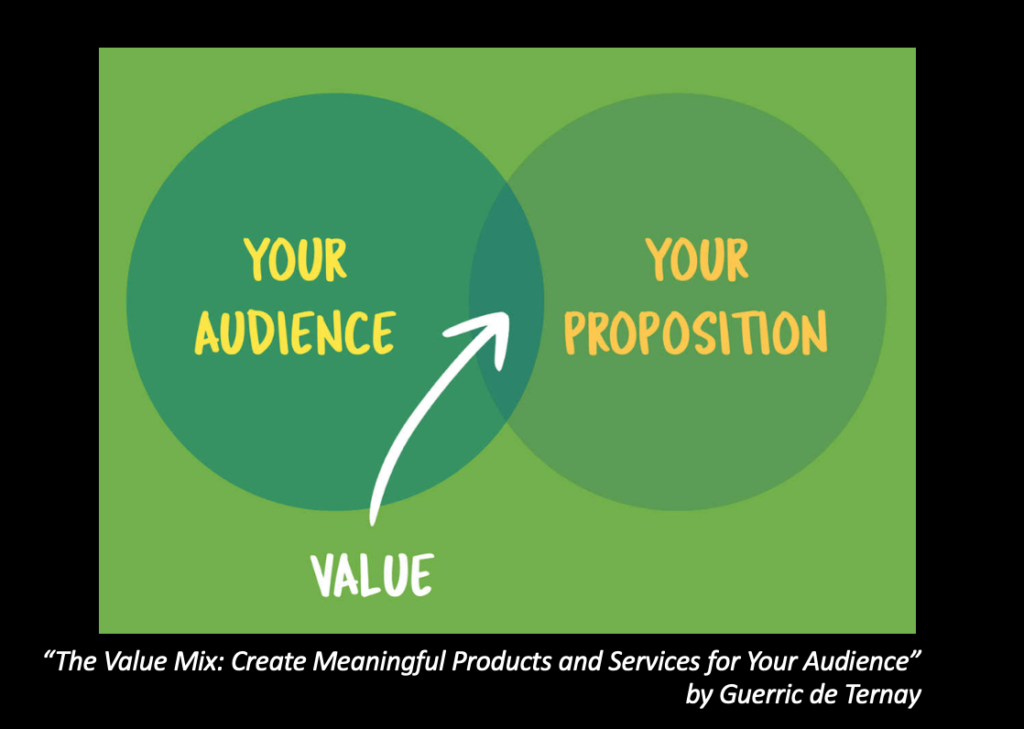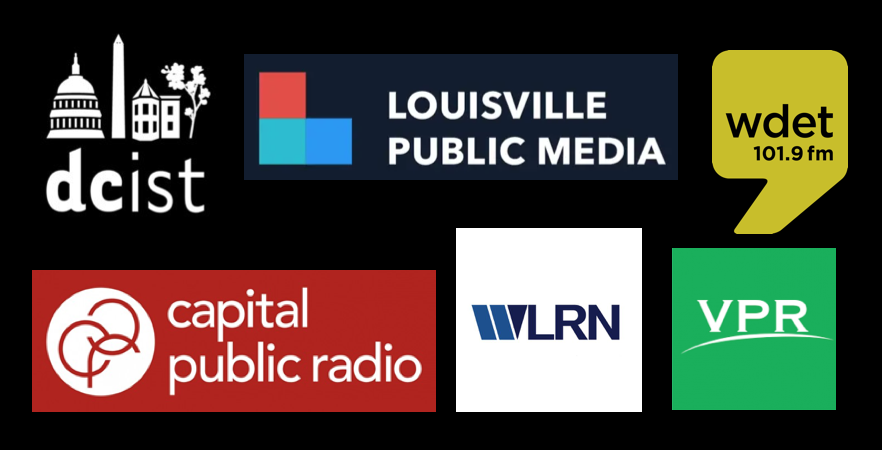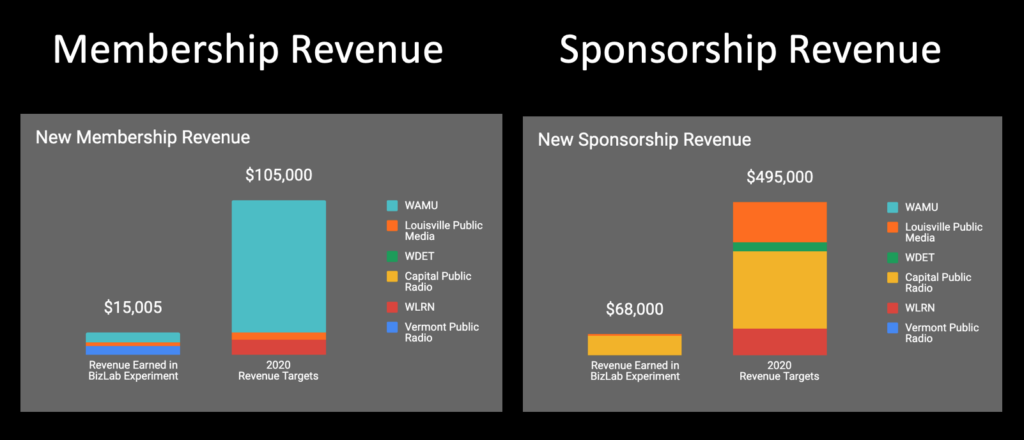[This is a summary of Opening Remarks from the BizLab Summit]
WBUR BizLab’s mission is to identify and test ideas for new revenue in public radio.
WBUR strongly believes that all of us in public media and nonprofit journalism need to remain vibrant and financially strong, so that we can continue to serve our mission of being a trusted and indispensable source of news and information. And to do that, we need to work together to identify paths forward in sustainability. And that is what BizLab’s year and this Summit is about: all of us coming together to learn, and to openly share what we’ve learned, to collectively become stronger.
2019 was an exciting year for us. Because of funding from CPB and Knight Foundation, BizLab was able to work with a diverse group of NPR stations across the country, all with different challenges and different opportunities. The 2019 cohort of stations were the DCist from WAMU, Louisville Public Media, WDET from Detroit, Capital Public Radio from Sacramento, WLRN from Miami, and Vermont Public Radio. The challenge put forth to these stations was to spend 6 months with us identifying a new path to revenue.
How does an organization find a new path to revenue?
There are a lot of ways to launch a new revenue stream within an organization. Many of us have experience in doing this, both at our stations and in other industries.
One way is through acquisition of a business or expertise. For example, NPR, WBEZ, WNYC, and This American Life acquired the podcast distribution platform Pocket Casts. By acquiring a revenue-generating business in an adjacent industry (in this case podcast distribution), an organization can add a new revenue stream and valuable new assets to its portfolio: new technology, skills and expertise, and podcast consumption data insights. The acquisition of non-revenue-generating assets allows organizations to further branch off to create new products or to use the assets to increase revenue in existing revenue streams.
For organizations where acquisition of new products and other organizations is not a viable option, the best option for creating new revenue is by innovating internally, using the skills and resources already available to the organization. While “innovation” can be a buzzword, and R&D and innovation labs can be more flash than substance, there are known methods that work: Design Thinking and Lean Startup methods are used by startups and entrepreneurs of all shapes and sizes to identify product ideas and test them quickly and efficiently. This model for new product design has been used for over a decade by both fledging startups and top corporations.
But we are a mission-driven non-profit. How do the principles of product development apply here?
Although we are in public media, where our content is provided as a public service, the principles of product design still apply. Even when we do not directly charge for the goods and services we provide, that doesn’t mean that the value we provide cannot be monetized. The example of corporate sponsorship is probably most clear: when corporate underwriters provide support for our station, they are receiving something of value to them: access to new customers. Our underwriters need access to our audience, and the on-air underwriting spots provides this to them.
This concept of value exchange also applies to a donation. Our public radio members donate to us because of what they get when they donate. It varies per donor: some donate because it makes them feel good that they financially supported something aligned to their values. Others donate because they want the tote bag or exclusive premium — they are purchasing a good. Others donate because they want to reinforce their identity as a “public radio nerd” and be an insider. By projecting to the world that they donate, they are making it clear they are true insiders.
Self-declared Public Radio Nerds on Instagram

The point is that new revenue comes from us providing new value to our audience, and asking them to pay for it. And the tighter the connection we can tie between the value we produce and the benefit people get from it, the more likely it is that the audience or user will contribute, by taking action and paying.
The first step of product development is identifying a problem people want solved
With the six BizLab stations, we set out to understand the values, needs and wants of the target customers of their ideas. Through interviews, focus groups, surveys, and data analysis, each team spent two months focusing on listening and learning about what matters to the audiences, companies, and external stakeholders who interact with public media. Several themes emerged. From audiences, we heard statements like:
“I need my news delivered when and how I consume it.”
“I want to be up to date on what is going on near me.”
“I want the latest news on the topic I am passionate about.”
“I want access to exclusive events.”
“I want to be in the know.”
These needs and wants speak volumes to personalizing our delivery of news and information, on their terms and on their platforms. If we make their lives easier, we will have earned a place in their news landscape. From companies and potential sponsors we heard:
“I want to connect with people who care about my type of business.”
“I need a simple way of creating ads that work.”
“I need a one-stop-shop for buying ads across multiple regions.”
These statements reveal how complex the advertising world has become, and if we can simplify the landscape and enable connections between companies and their customers, we will be solving concrete problems for them.
Cohort Station Product Ideas
With these values identified, the six stations were each able to define a product around a specific need or want they could solve.
- WAMU designed a membership for the DCist, distinct from a membership to WAMU with perks designed for the loyal DCist reader.
- Louisville Public Media launched a new membership program for Do502, an events listing website, centered around exclusive events and ticket discounts, again, distinct from a membership to Louisville Public Media.
- WDET tested the product offering for small businesses in Detroit — a social media sponsored content product, designed to reach their desired customers.
- Capital Public Radio reimagining a cross-network underwriting sales product, converting a longstanding 15-second spot agreement between CapRadio and California public radio stations into a regional underwriting product, giving new access to underwriters to reach the state of California.
- WLRN created a new climate and environmental newsletter product, launching it with an eye towards it being a new membership donation channel and sponsorship opportunity.
- Vermont Public Radio focused on deeply serving Southern Vermont residents by delivering localized and targeted news on multiple platforms, to increase their engagement with VPR content and to increase donations from the region.
Lean Testing
Today’s Summit will share the details of these projects through lightning talks and panel presentations. Because teams followed our innovation process, they did not launch these products immediately after determining these ideas met user needs. Instead they tested them. They each created the tiniest example of what the idea was and quickly showed it to customers in as much of a real way as possible. In this way, the teams collected evidence that the idea was a good one. And sometimes it wasn’t good! But because they had moved quickly and hadn’t spent many resources on their test, the failures were quick and painless. The teams could move on, glad to have not expended more time on the idea.
Stations each went through four months of testing each idea, launching experiments as frequently as every two weeks. After each test, they refined their product idea. They continually built evidence of what was working, pivoting and changing as they learned what didn’t work.
Some examples of tests include: DCist and LPM asked people to join non-existent membership programs. LPM printed membership cards for the first 12 members on their office printers. WLRN posted sign-up sheets for non-existent newsletters to gauge interest in topics. WDET asked small businesses to sign up for a pilot program, simply to see if anyone would sign up. CapRadio pitched an advertising product that didn’t have a name yet. VPR asked people to register for a news & brews event that ended up being cancelled. But they learned in that test that people wanted to attend.
These teams went out on a limb and asked potential users to take action, so that they could see if there was tangible interest in this concept. They ran small, fast tests and earned small amounts of revenue in the process, in order to determine what would work and what would not work. It was through this process that the stations identified ways of expanding existing station revenue, whether that was through entirely new products or through new donation channels, or with new content to drive new donations.
The Financial Results
Each project has many lessons learned embedded in the details you’ll hear today. In aggregate, the projects also tell a compelling financial story. During the testing phase, stations collected $83,000 in revenue. Remember, our goal during testing wasn’t to make revenue, but to learn what was working. And it was from this testing, that each team made proposals to their stations to launch a new product, defined based on the lessons learned. And their collective revenue targets for 2020, the first year of each product, totals to $600,000. The charts below break down these numbers by product type and by station. These teams deserve applause for these results!
Summit Overview
This introduction gives you the basic framework of how these stations went from a challenge to find new revenue to actually finding it. They took on the role of entrepreneurs this year, and through flexibility, speed, and curiosity they found new opportunities for their stations.
The rest of today will be about sharing our collective discoveries of what works, what doesn’t work, and the challenges we faced. The day begins with each station telling you more about their projects and results. Then we will discuss the organizational and cultural challenges of introducing new ideas and launching new products at an organization. We have a fantastic panel on leadership and innovation. And we will wrap up the day with concrete case studies of tools and tips for using text messaging platforms and asking for podcast donations.
In Conclusion
Lean in today, and have conversations and capture ideas that you can apply at your own organization. This work is not easy, but it is urgent, and we are in this together.
I want to emphasize one thing: all of us can do this. Every public radio station can identify new possibilities for revenue and quickly test and size the opportunity and choose to take it forward. When hearing about how BizLab cohort stations did it, in addition to observing what they learned, pay attention to how they did it. You can take both their lessons learned and their techniques home with you today.
[Download slides from this presentation or watch the video.]
